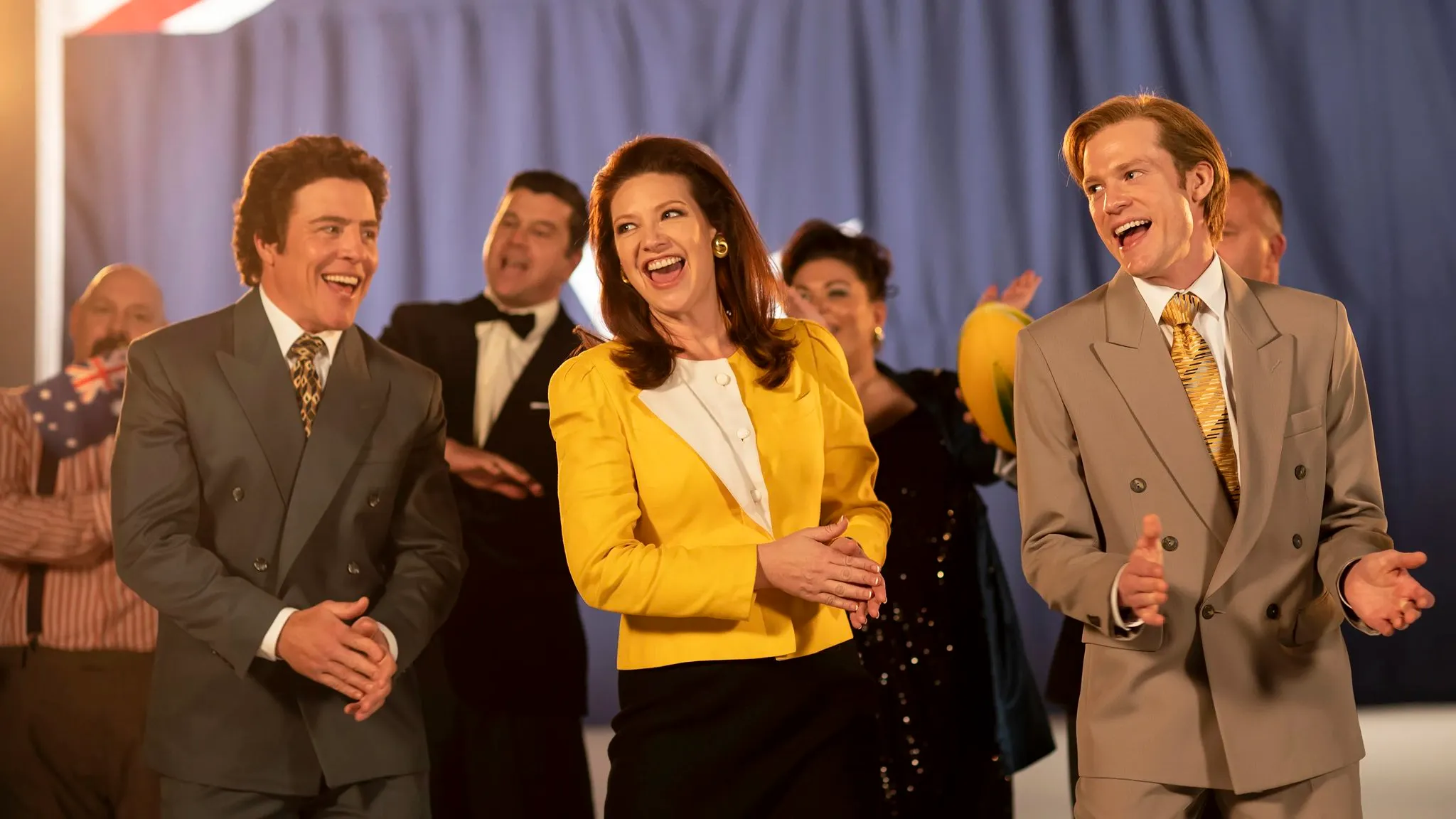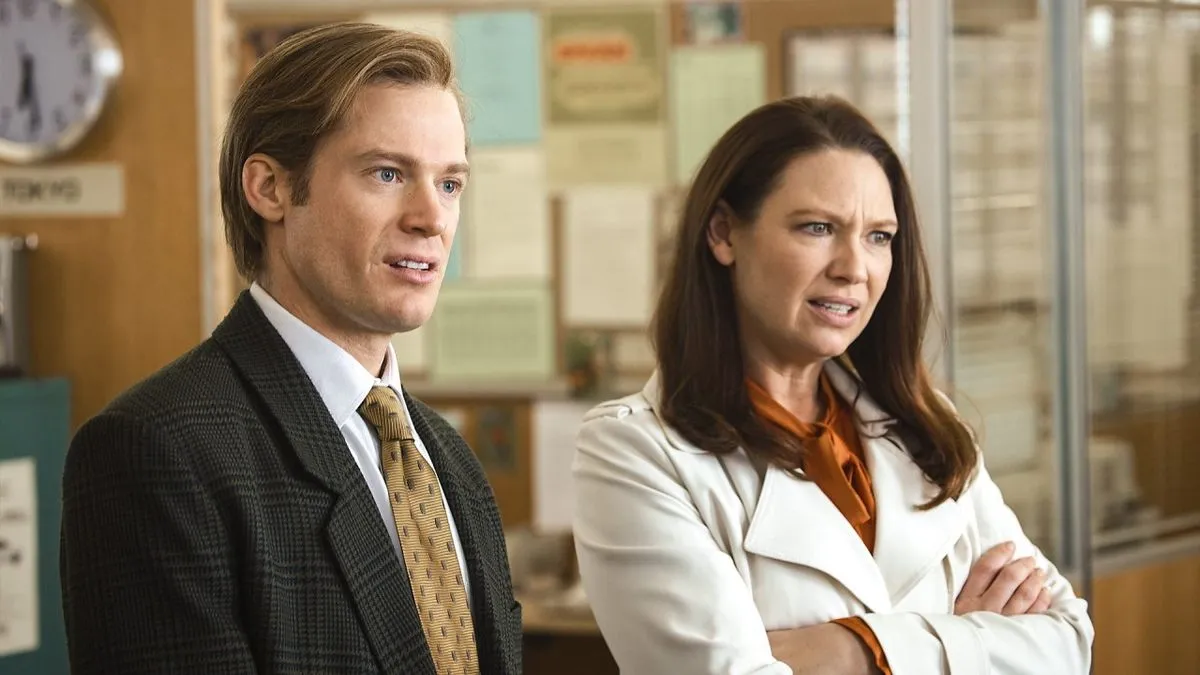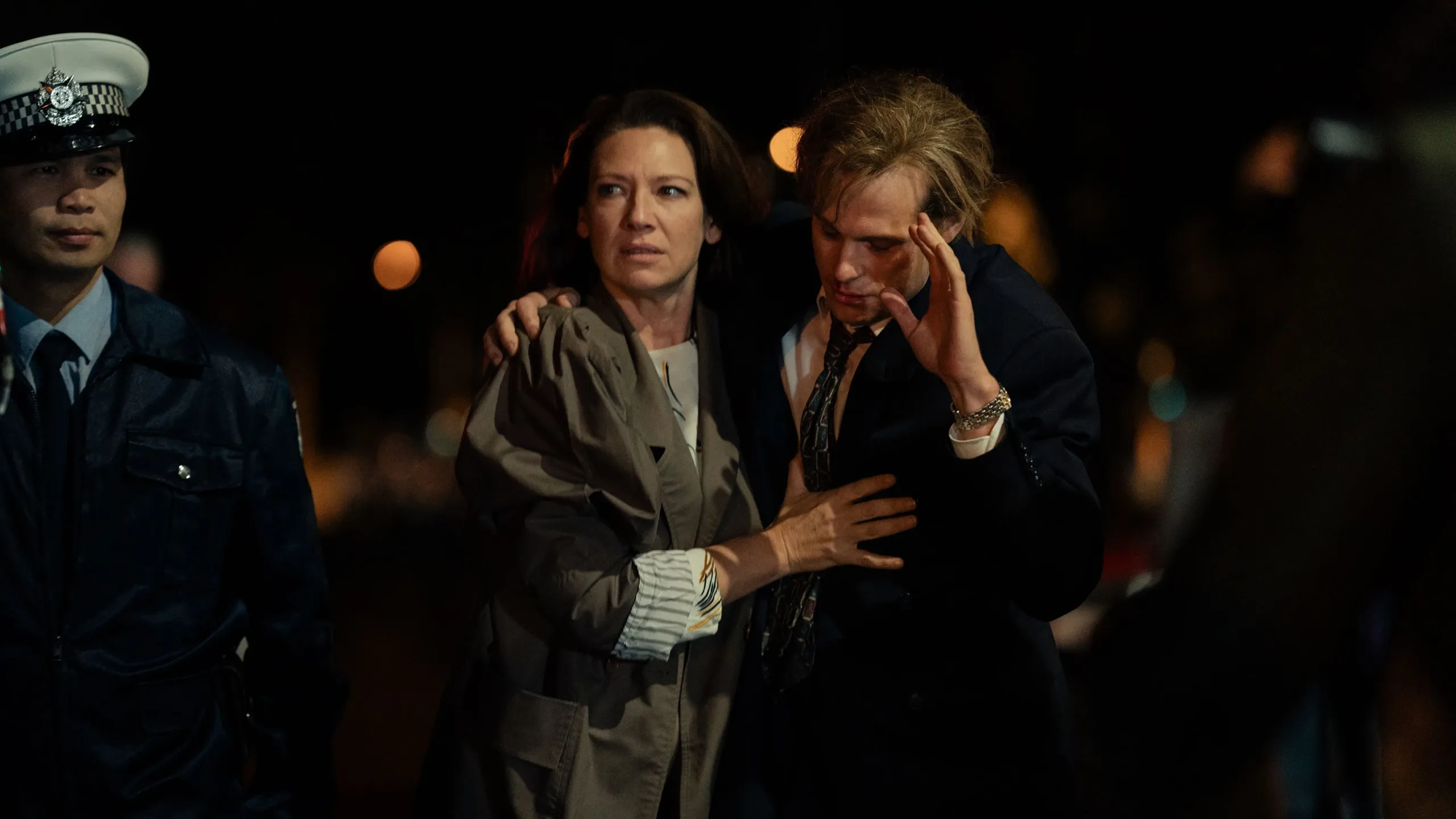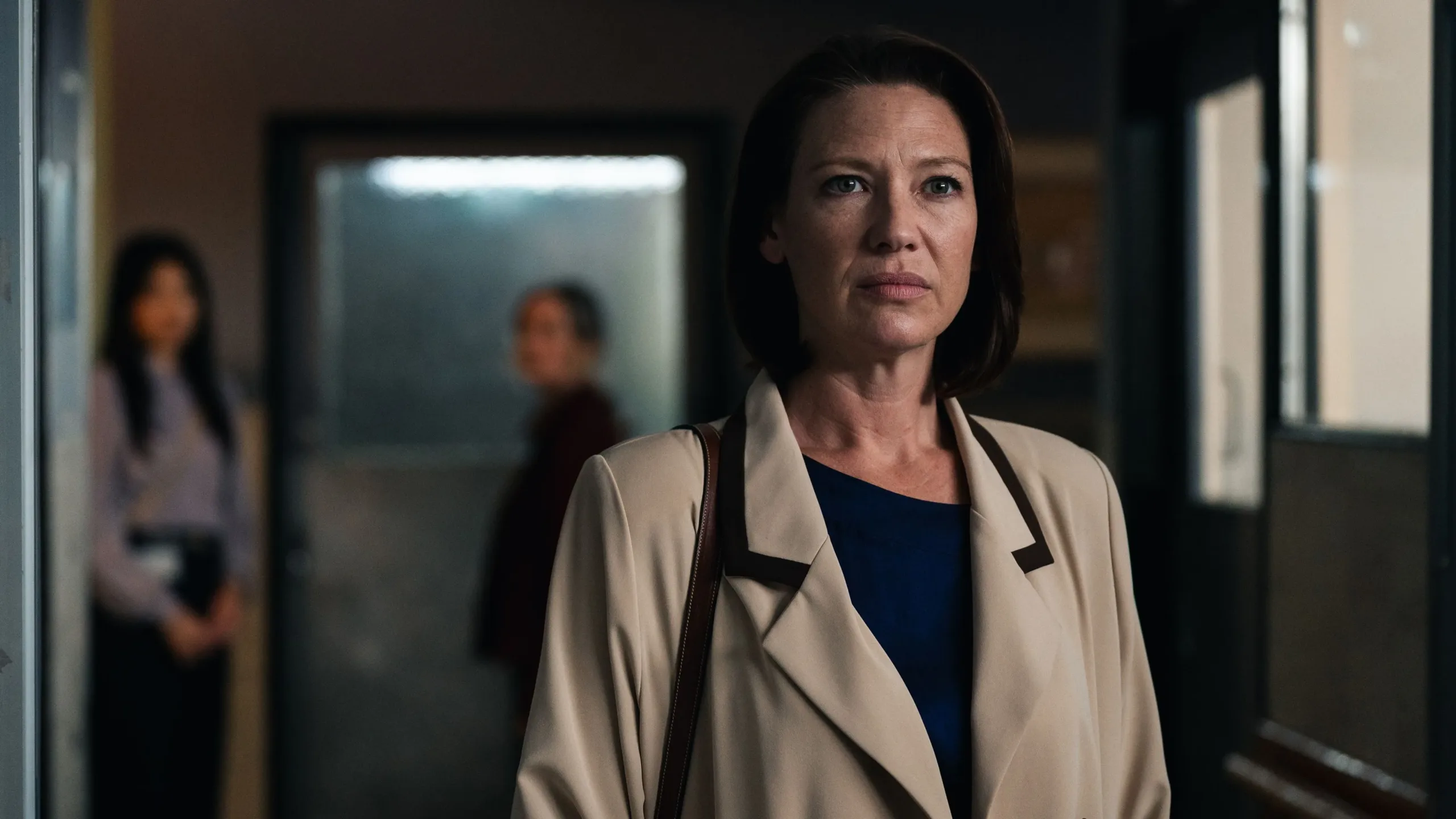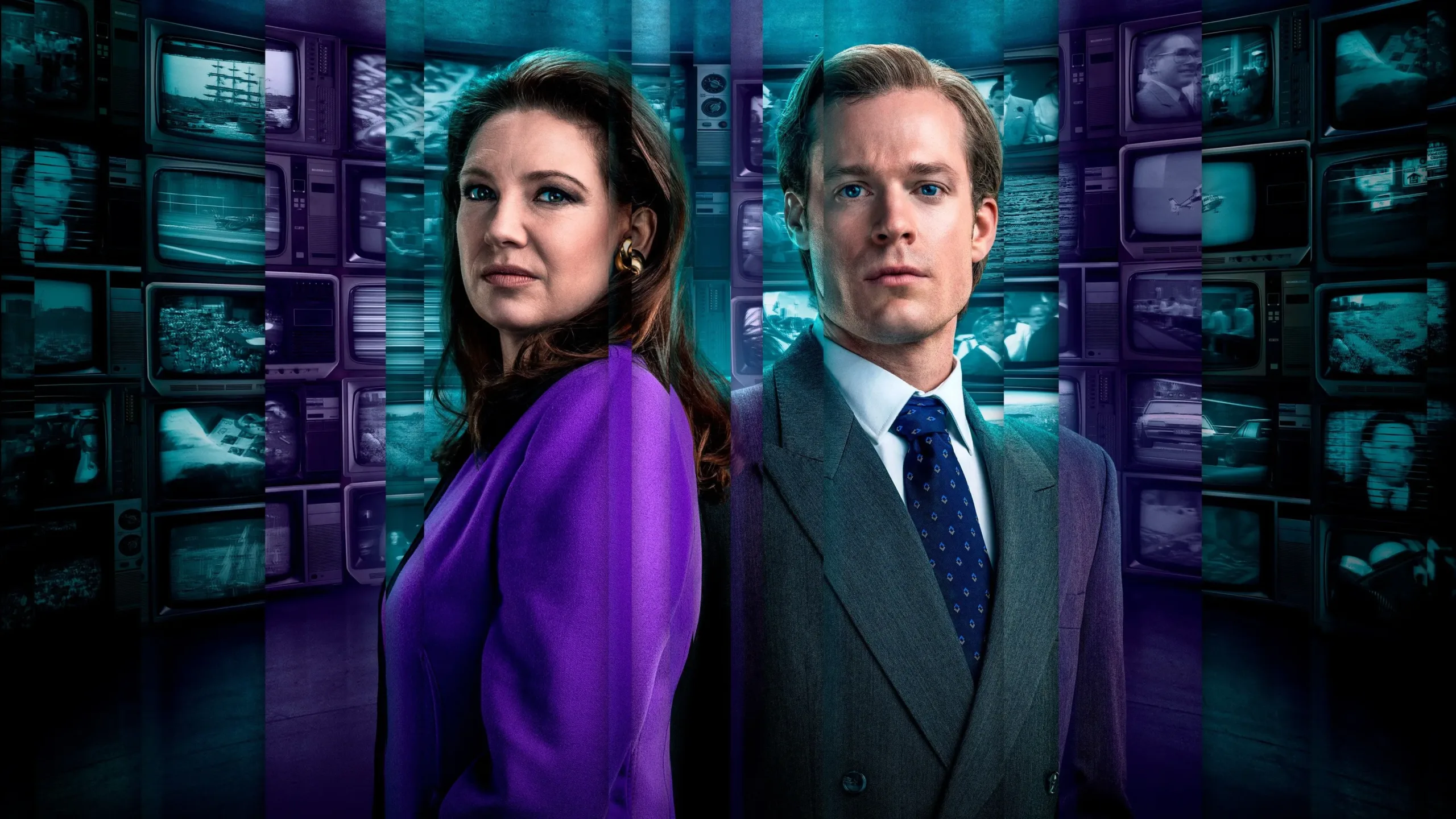The Newsreader returns for its third and final season, a detailed exploration of media, power, and personal identity. Set in 1989—a year bridging the idealism of the 80s and the tech-driven narratives of the 90s—the series examines news events and subtle cultural transformations. The story intertwines real-life news events with fictional narratives, positioning characters at the center of societal change.
The drama follows Helen Norville and Dale Jennings, co-anchors whose personal and professional paths have separated since the previous season’s conclusion. Helen explores global stories while experiencing emotional distance. Dale leads national news broadcasts while wrestling with personal challenges related to his sexuality—a complexity beneath his polished exterior.
Their relationship—filled with professional tension, personal connection, and unspoken history—reveals how individual identities intersect with media expectations and cultural dynamics of the time. Through Helen and Dale, the series explores how personal experiences are shaped by external pressures and cultural contexts.
Navigating Identity and Success: The Evolution of Helen and Dale
The Newsreader Season 3 explores Helen Norville and Dale Jennings’ complex journeys through ambition, identity, and professional challenges. Television and media shift in the late 80s, pulling these characters into separate paths that reveal societal transformations.
Helen Norville moves from news anchor to investigative journalist, challenging gender constraints in the workplace. The 80s media environment, controlled by male professionals, frames her struggle with mental health and professional pressures. Her narrative reveals the emotional cost of success, particularly for women in high-pressure industries. Her connection with Dale adds depth to her experience of ambition and personal loss.
Dale Jennings represents the intricate challenges of masculinity and sexuality within a media world that demands perfect public images. His status as Australia’s top newsreader masks deep personal conflicts. Dale’s internal battle with his identity highlights the challenges of living authentically under societal expectations in 1980s television.
Supporting characters illuminate shifts in media, gender, and workplace dynamics. Noelene’s pregnancy explores tensions between career and motherhood in an industry that traditionally marginalized women. Characters like Rob Rickards and Lindsay Cunningham reveal complex power structures behind media productions, showing how societal pressures shape both public and private narratives.
Real Events, Real Tensions: The Integration of History and Fiction in The Newsreader Season 3
The Newsreader explores the intersection of historical events and fictional narratives in its third season. Set in 1989, the series incorporates significant global events like the Lockerbie bombing, Tiananmen Square massacre, and Exxon Valdez oil spill. The show integrates these moments into its newsroom drama, examining how media interprets and represents historical events.
The narrative strategy connects global events with characters’ personal struggles. Helen and Dale’s individual journeys unfold against a backdrop of world-changing moments, creating a complex exploration of media’s role in storytelling and truth-telling. Their experiences highlight the intricate relationship between personal narratives and larger historical contexts.
The series encounters challenges when merging archival footage with scripted drama. The Logie Awards segment reveals the difficulties of blending real and fictional elements, creating moments of narrative tension. This approach raises questions about historical representation and dramatic interpretation.
The show’s treatment of workplace dynamics and gender roles presents a nuanced view of 1980s media culture. Noelene’s character explores the challenges of balancing career and motherhood, while the portrayal of the newsroom reflects a more contemporary perspective on workplace diversity and social interactions.
Media, Power, and Changing Norms: The Newsreader’s Timely Social Commentary
The Newsreader examines the media landscape of the 1980s, revealing a world defined by corporate dynamics, sexism, and systemic barriers. The newsroom emerges as a complex environment where power, ambition, and social constraints intersect. Corporate greed and discriminatory practices shape the experiences of characters working within this challenging system.
Helen and Dale represent the struggles of individuals trapped within restrictive media structures. Helen confronts a male-dominated professional space that limits her opportunities despite her intelligence and skills. Dale wrestles with external expectations, forcing him to suppress his authentic self to maintain a prescribed public image.
The series explores workplace dynamics through characters like Noelene, who challenges traditional expectations of women’s roles. Her attempts to balance professional aspirations with motherhood highlight the tension between personal identity and professional demands. The show presents a nuanced view of workplace gender dynamics, questioning historical representations of equality and opportunity.
Power emerges as a central theme, revealing how professional success intertwines with personal identity. Helen and Dale’s experiences demonstrate the complex negotiations required to survive and advance in a challenging media environment. Their stories illuminate the personal costs of maintaining professional facades and navigating systemic constraints.
A Slow Burn: The Subtle Drama of The Newsreader’s Final Season
The Newsreader centers on Helen and Dale’s intricate personal journeys, using their stories to explore deeper themes of identity and professional challenges. The series connects their individual struggles with the historical context of 1989, creating a nuanced narrative that goes beyond typical period drama storytelling.
Helen’s search for meaning outside the newsroom and Dale’s internal conflicts drive the emotional core of the show. Their relationship transforms from a romantic connection to a complex professional rivalry. Unspoken tensions and quiet moments reveal the characters’ internal struggles more powerfully than dramatic confrontations.
The Logies event serves as a critical point of intersection for Helen and Dale’s competing trajectories. Moments of introspection highlight their psychological landscapes, creating depth beyond surface-level conflicts. The series carefully builds emotional complexity through subtle interactions and personal revelations.
The show distinguishes itself through a measured storytelling approach. Instead of relying on dramatic plot twists, it explores characters’ inner worlds through quiet, meaningful scenes. The third season embraces a reflective tone, inviting viewers to understand the characters’ emotional journeys and personal transformations.
The Heart of the Newsroom: Performances and Direction in The Newsreader Season 3
The Newsreader thrives on powerful performances by Anna Torv and Sam Reid as Helen and Dale. Torv portrays Helen with remarkable depth, capturing a woman balancing professional success with personal struggles. Her character reveals the challenges faced by women in male-dominated media environments, presenting a nuanced exploration of identity and ambition.
Sam Reid’s Dale emerges as a study of internal conflict. His performance communicates the tension between public image and personal truth, depicting a newsreader wrestling with hidden emotional struggles. Reid creates a character whose restraint speaks volumes about societal expectations and personal suppression.
Michelle Lim Davidson’s Noelene and Stephen Peacocke’s Rob Rickards provide critical context to the series’ social commentary. Davidson’s character illuminates the challenges of women navigating professional spaces, while Peacocke’s role adds complexity to discussions of race and gender in the late 1980s media landscape.
Emma Freeman’s direction elevates the storytelling through careful visual choices. The integration of archival footage creates a textured narrative approach, blending historical reality with dramatic storytelling. Freeman’s cinematographic style focuses on intimate moments, allowing viewers to connect deeply with characters’ internal experiences.
The End of the Line: The Newsreader Season 3’s Concluding Chapter
The Newsreader concludes its third season with a nuanced exploration of Helen and Dale’s personal and professional journeys. Helen emerges with a strengthened sense of self-determination, having confronted her place in the newsroom. Dale’s path reflects a quiet but profound resolution of his internal struggles with identity and professional expectations.
The series explores the media’s impact on individual lives and public consciousness. Characters grapple with their roles within the media system, revealing the complex ways people find meaning amid institutional pressures. The narrative exposes the tension between personal identity and professional demands, particularly in the context of 1980s television.
The final season offers a reflective look at media’s influence on self-perception and public narrative. Characters navigate the challenges of maintaining personal integrity within a system that often reduces individuals to simplified representations. The show presents a critical examination of media’s power to shape personal and collective experiences.
The Newsreader provides a rich portrayal of the 1980s media landscape, exploring themes of identity, power, and representation. Its approach intertwines personal stories with historical context, creating a compelling narrative that speaks to broader social dynamics.
The Review
The Newsreader Season 3
The Newsreader Season 3 explores the intricate connections between media, personal identity, and social dynamics. Anna Torv and Sam Reid deliver powerful performances that illuminate the complex emotional landscapes of their characters. The series presents a nuanced examination of the late 1980s television environment, revealing the personal struggles hidden beneath professional exteriors.
PROS
- Strong, nuanced performances from Anna Torv and Sam Reid.
- Thoughtful exploration of media, power, and identity.
- Effective blending of historical events with character-driven storytelling.
- Rich social commentary on the 80s media landscape and evolving societal norms.
CONS
- Some archival footage integration feels jarring.
- Certain historical elements are altered for dramatic effect, impacting authenticity.
- Slower pacing in the final season may not appeal to all viewers.









































